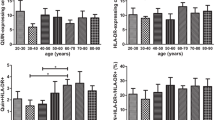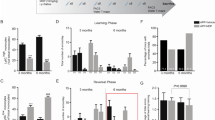Abstract
Selegiline (R-deprenyl), a monoamine oxidase-B (MAO-B) inhibitor, has complex pharmacological effect that contributes to treatment of neurodegenerative diseases such as Parkinson’s and presumably Alzheimer’s disease and might work as an inhibitor of tumor growth. In respect of tumorigenesis and metastasis formation, the controlled modifications of adhesion and migration have high therapeutic significance. In the present study, our purpose was to investigate cell physiological responses (adhesion, chemotaxis and proliferation) induced by selegiline, its metabolites and synthetic derivatives and to find some correlations between the molecular structure and the reported antitumor behavior of the derivatives. Our results demonstrated that both R- and S-deprenyls have the potency to elicit increased adhesion and a chemorepellent activity in monocyte model (Mono Mac 6 cell line derived from monoblastic leukemia); however, only the R-enantiomer proved to be cytotoxic. Among the metabolites R-amphetamine has retained the adhesion inducer and the chemorepellent effect of the parent drug on the most significant level. In contrast, a reversed chemotactic effect and an improved cytotoxic character were detected in the presence of fluoro group (p-fluoro-S-deprenyl). In summary, the adhesion inducer activity, chemorepellent and advantageous cytotoxic effects of selegiline and some derivatives indicate that these drug molecules might have inhibitory effects in metastasis formation in primary tumors.




Similar content being viewed by others
References
Atienza JM, Zhu J, Wang X, Xu X, Abassi Y (2005) Dynamic monitoring of cell adhesion and spreading on microelectronic sensor arrays. J Biomol Screen 10:795–805
Barrett JS, Hochadel TJ, Morales RJ, Rohatagi S, DeWitt KE, Watson SK, DiSanto AR (1996a) Pharmacokinetics and safety of a selegiline transdermal system relative to single dose oral administration in the elderly. Am J Ther 3:688–698
Barrett JS, Szego P, Rohatagi S, Morales RJ, DeWitt KE, Rajewski G, Ireland J (1996b) Absorption and presystemic metabolism of selegiline hydrochloride at different regions in the gastrointestinal tract in healthy males. Pharm Res 13:1535–1540
Birkmayer W, Riederer P, Youdim MB, Linauer W (1975) The potentiation of the anti- akinetic effect after l-dopa treatment by an inhibitor of MAO-B, deprenyl. J Neural Transm 36:303–326
Birkmayer W, Riederer P, Ambrozi L, Youdim MB (1977) Implications of combined treatment with ‘Madopar’ and l-deprenyl in Parkinson’s disease. A long-term study. Lancet 1:439–443
Birkmayer W, Knoll J, Riederer P, Youdim MB (1983) (—)-Deprenyl leads to prolongation of l-dopa efficacy in Parkinson’s disease. Mod Probl Pharmacopsychiatry 19:170–176
Birkmayer W, Knoll J, Riederer P, Youdim MB, Hars V, Marton J (1985) Increased life expectancy resulting from addition of l-deprenyl to Madopar treatment in Parkinson’s disease: a longterm study. J Neural Transm 64:113–127
Buu NT, Angers M, Duhaime J, Kuchel O (1987) Modification of dopamine and norepinephrine metabolism in the rat brain by monoamine oxidase inhibitors. J Neural Transm 70:39–50
Carrillo MC, Kanai S, Nokubo M, Kitani K (1991) (−)-Deprenyl induces activities of both superoxide dismutase and catalase but not of glutathione peroxidase in the striatum of young male rats. Life Sci 48:517–521
Clement B, Behrens D, Möller W, Cashman JR (2000) Reduction of amphetamine hydroxylamine and other aliphatic hydroxylamines by benzamidoxime reductase and human liver microsomes. Chem Res Toxicol 13:1037–1045
Erdö F, Baranyi A, Takács J, Arányi P (2000) Different neurorescue profiles of selegiline and p-fluoro-selegiline in gerbils. Neuroreport 11:2597–2600
Fowler JS, Volkow ND, Wang GJ, Logan J, Pappas N, Shea C, MacGregor R (1997) Age-related increases in brain monoamine oxidase B in living healthy human subjects. Neurobiol Aging 18:431–435
Giaever I, Keese CR (1984) Monitoring fibroblast behavior with an applied electric field. Proc Natl Acad Sci USA 81:3761–3764
Haberle D, Szökö E, Halász AS, Magyar K (2001) The effect of low oral dose of (−)-deprenyl and its metabolites on DSP-4 toxicity. J Neural Transm 108:1239–1247
Heinonen EH, Myllyla V, Sotaniemi K (1989) Pharmacokinetics and metabolism of selegiline. Acta Neurol Scand 126:93–99
Jenei V, Zor K, Magyar K, Jakus J (2005) Increased cell–cell adhesion, a novel effect of R-(–)-deprenyl. J Neural Transm 112:1433–1445
Knoll J, Magyar K (1972) Some puzzling pharmacological effects of monoamine oxidase inhibitors. Adv Biochem Psychopharmacol 5:393–408
Knoll J, Ecseri Z, Kelemen K, Nievel J, Knoll B (1965) Phenylisopropylmethylpropinylamine (E-250), a new spectrum psychic energizer. Arch Int Pharmacodyn Ther 155:154–164
Kőhidai L, Lajkó E, Láng O, Igaz A, Lengyel J, Magyar K (2010) Cell adhesion induced by deprenyl and its derivatives—investigations of adenocarcinoma cell lines (LM2, LM3) by ECIS technique and introduction Cell-LED® a new lighting equipment dedicated to ECIS (2010 ECIS Users Meeting, Rensselaerville, USA)
Lamensdorf I, Youdim MB, Finberg JP (1996) Effect of long-term treatment with selective monoamine oxidase A and B inhibitors on dopamine release from rat striatum in vivo. J Neurochem 67:1532–1539
Magyar K (1994) Behaviour of (−)-deprenyl and its analogues. J Neural Transm Suppl 41:167–175
Magyar K (1997) Effect of selegiline against selective neurotoxins. Vopr Med Khim 43:504–514
Magyar K, Szende B (2004) (−)-Deprenyl, a selective MAO-B inhibitor, with apoptotic and antiapoptotic properties. Neurotoxicology 25:233–242
Magyar K, Vizi ES, Ecseri Z, Knoll J (1967) Comparative pharmacological analysis of the optical isomers of phenyl-isopropyl-methyl-propinylam.ine (E-250). Acta Physiol Hung 32:377–387
Magyar K, Ecseri Z, Bernáth G, Sátory É, Knoll J (1979) Structure–activity relationship of selective inhibitors of MAO-B. In: Magyar K (ed) Advances in pharmacological research and practice, proceedings of the 3rd congress of the Hungarian Pharmacological Society, Budapest, vol IV. Monoamine oxidases and their selective inhibition. Pergamon Press, Akadémiai kiadó, Budapest, pp 11–21
Magyar K, Szende B, Lengyel J, Tarczali J, Szatmáry I (1998) The neuroprotective and neuronal rescue effects of (−)-deprenyl. J Neural Transm Suppl 52:109–123
Magyar K, Pálfi M, Tábi T, Kalász H, Szende B, Szökő E (2004) Pharmacological aspect of (−)-deprenyl. Curr Med Chem 11:2017–2031
Mannerström M, Toimela T, Ylikomi T, Tähti H (2006) The combined use of human neuronal and liver cell lines and mouse hepatocytes improves the predictability of the neurotoxicity of selected drugs. Toxicol Lett 165:195–202
Moh MC, Shen S (2009) The roles of cell adhesion molecules in tumor suppression and cell migration: a new paradox. Cell Adhesion Migr 3:334–336
Reynolds GP, Elsworth JD, Blau K, Sandler M, Lees AJ, Stern GM (1978) Deprenyl is metabolized to methamphetamine and amphetamine in man. Br J Clin Pharmacol 6:542–544
Riederer P, Youdim MB (1986) Monoamine oxidase activity and monoamine metabolism in brains of parkinsonian patients treated with l-deprenyl. J Neurochem 46:1359–1365
Schmidt S, Friedl P (2010) Interstitial cell migration: integrin-dependent and alternative adhesion mechanisms. Cell Tissue Res 339:83–92
Shin HS (1997) Metabolism of selegiline in humans. Identification, excretion, and stereochemistry of urine metabolites. Drug Metab Dispos 25:657–662
Szende B, Magyar K, Szegedi Z (2000) Apoptotic and antiapoptotic effect of (−)-deprenyl and (−)-desmethyl-deprenyl on human cell lines. Neurobiology (Bp) 8:249–255
Szende B, Bökönyi G, Bocsi J, Kéri G, Timár F, Magyar K (2001) Anti-apoptotic and apoptotic action of (–)-deprenyl and its metabolites. J Neural Transm 108:25–33
Szende B, Barna G, Magyar K (2010) Cytoprotective effect of (−)-deprenyl, (−)desmethyl-deprenyl and (−)deprenyl-N-oxide on glutathione depleted A-2058 melanoma cells. J Neural Transm 117:695–698
Szilágyi G, Simon L, Wappler E, Magyar K, Nagy Z (2009) (−)Deprenyl-N-oxide, a (−)deprenyl metabolite, is cytoprotective after hypoxic injury in PC12 cells, or after transient brain ischemia in gerbils. Neurol Sci 283:182–186
Szökő É, Tábi T, Halász AS, Pálfi M, Kalász H (2004) Identification of the enantiomer form of deprenyl metabolites and deprenyl-N-oxide in Rat Urine. In: Török T, Klebovich I (eds) Monoamine oxidase inhibitors and their role in neurotransmission (drug development). Medicina Kiadó, Budapest, pp 41–54
Tatton WG, Chalmers-Redman RME (1996) Modulation of gene expression rather than monoamine oxidase inhibition: (−)-deprenyl-related compounds in controlling neurodegeneration. Neurology 47:S171–S183
Tatton WG, Ju WY, Holland DP, Tai C, Kwan M (1994) (−)-Deprenyl reduces PC12 cell apoptosis by inducing new protein synthesis. J Neurochem 63:1572–1575
Tatton WG, Wadia JS, Ju WY, Chalmers-Redman RM, Tatton NA (1996) (−)-Deprenyl reduces neuronal apoptosis and facilitates neuronal outgrowth by altering protein synthesis without inhibiting monoamine oxidase. J Neural Transm Suppl 48:45–59
Tekes K, Tóthfalusi L, Gaál J, Magyar K (1988) Effect of MAO inhibitors on the uptake and metabolism of dopamine in rat and human brain. Pol J Pharmacol Pharm 40:653–658
Terleckyj IA, Heikkila RE (1992) In vivo and in vitro pharmacologic profile of two new irreversible MAO-B inhibitors: MDL 72, 974A and fluorodeprenyl. Ann NY Acad Sci 648:365–367
ThyagaRajan S, Meites J, Quadri SK (1995) Deprenyl reinitiates estrous cycles, reduces serum prolactin and decreases the incidence of mammary and pituitary tumors in old acyclic rats. Endocrinology 136:1103–1110
ThyagaRajan S, Madden KS, Stevens SY, Felten DL (1999) Inhibition of tumor growth by l-deprenyl involves neural-immune interactions in rats with spontaneously developing mammary tumors. Anticancer Res 19:5023–5028
ThyagaRajan S, Madden KS, Stevens SY, Felten DL (2000) Antitumor effect of l-deprenyl is associated with enhanced central and peripheral neurotransmission and immune reactivity in rats with carcinogen-induced mammary tumors. J Neuroimmunol 109:95–104
Wu RF, Ichikawa Y (1995) Inhibition of 1-methyl-4.phenyl-1,2,3,6-tetrahydropyridine metabolic activity of porcine FAD-containing monooxygenase activity by selective monoamine oxidase-B inhibitors. FEBS Lett 358:145–148
Youdim MB, Weinstock M (2002) Novel neuroprotective anti-Alzheimer drugs with anti-depressant activity derived from the anti-Parkinson drug, rasagiline. Mech Ageing Dev 123:1081–1086
Youdim MB, Wadia A, Tatton W, Weinstock M (2006) The antiParkinson drug rasagiline and its cholinesterase inhibitor derivatives exert neuroprotection unrelated to MAO inhibition in cell culture and in vivo. Ann NY Acad Sci 939:450–458
Acknowledgments
Authors express their gratitude to Professor Gyorgy Csaba for his suggestions and critical reading of the manuscript and to Ms Maria Knippel, Andrea Orban, and Andrea Kovács for their expert technical assistance. This study was supported by the Neurochemical Research Group of Hungarian Academy of Sciences, Hungarian Academy of Sciences Foundation OTKA 63415 and ETT 141/2003 Grants.
Conflict of interest
None of the authors of the above manuscript has declared any conflict of interest.
Author information
Authors and Affiliations
Corresponding author
Additional information
E. Lajkó and L. Polgár contributed equally to this work.
Rights and permissions
About this article
Cite this article
Lajkó, E., Polgár, L., Láng, O. et al. Basic cell physiological activities (cell adhesion, chemotaxis and proliferation) induced by selegiline and its derivatives in Mono Mac 6 human monocytes. J Neural Transm 119, 545–556 (2012). https://doi.org/10.1007/s00702-011-0735-1
Received:
Accepted:
Published:
Issue Date:
DOI: https://doi.org/10.1007/s00702-011-0735-1




